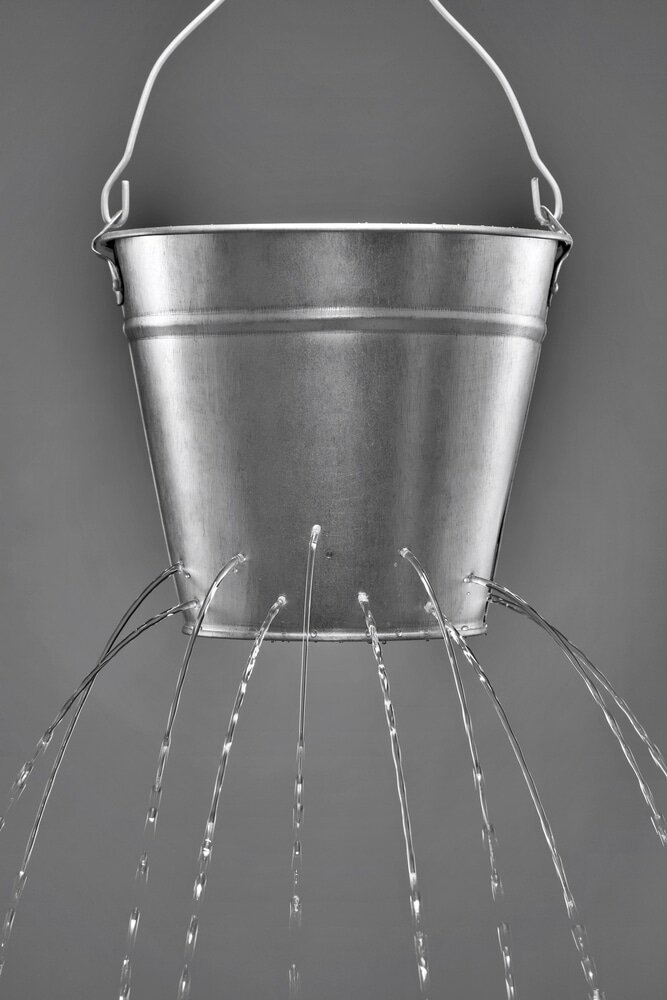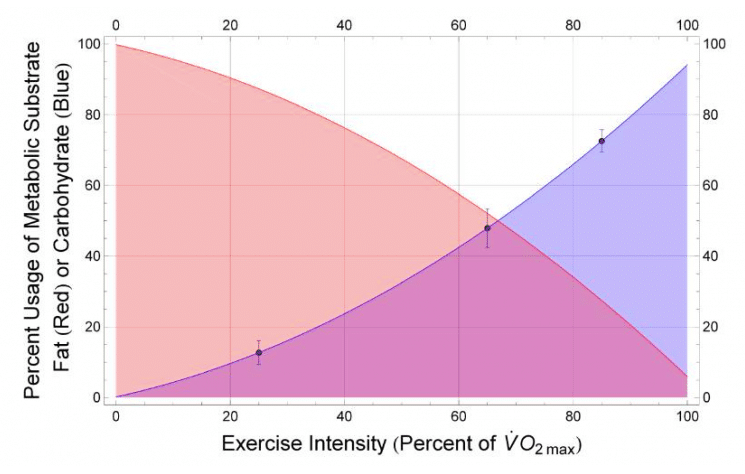Understanding how the body oxidizes fat and carbohydrate is fundamentally important to training and proper nutrition. We break down the science behind it to make it easily understandable.

So you want to learn how to fuel for your upcoming marathon? No problem. Just do a quick Google search for burning carbohydrates and fat and… oh God!! Your search returned about 41 million (41,300,000 to be exact!) search results, all of which likely differ in the advice given.
The topic of fueling is very confusing. This is primarily due to several factors:
- A lot of the research is sponsored by nutrition companies
- The science is complex and hard to understand
- Lots of variables (ex: intensity, distance, caloric burn, carb vs. fat, etc…)
- There is quite a bit of individual bias in articles found online
From a nutritional standpoint, finishing a marathon and more specifically, finishing at, or close to one’s goal time has everything to do with carbohydrate vs. fat utilization. This of course encompasses many variables such as pacing and body weight, just to name a few.
So… this post will seek to explain the science behind carbohydrate and fat utilization so that you understand what to do, and likely more important, what not to do. However, as each individual differs in regard to their training practices and how their body responds to training and diet, this post is not designed to give recommendations per se (though there are a few), but rather to provide a comprehensive look at the relationship between carbohydrates and fat.
You’re A Leaky Bucket

You might have read that you can burn more than 750 calories per hour while exercising, while only being able to metabolize 200-250 calories per hour. Simply based on this math… you’re screwed! However, this is an overly simplistic and thus erroneous way to look at fueling.
First off, it’s critical to understand that the type of calorie (carbohydrate or fat) being primarily utilized for fuel at any given point is largely based off intensity. It is also important to note that even the leanest of athletes has enough fat to fuel them for back-to-back marathons. So from a performance standpoint, fat is not the issue – it’s carbs.
While overly simplified, the slower and easier you run, the more reliant your body is upon fat for fuel whereas the faster and more intense you run, the more reliant your body is upon carbohydrates for fuel.
As we already established, fat is not really the issue – its carbohydrates, as they are really the performance limiter. In order to run at your desired pace and not ‘hit the wall,’ you need carbohydrates and more specifically, you need to be continually ingesting them throughout the race – as well as likely before the race, to get you to the finish line at your desired pace.
“Fat Burns In A Carbohydrate Flame”

This phrase essentially means that for the body to utilize fat as an energy source, carbohydrates must be present. OK… got it. But what happens when you burn through all your stored glycogen and hit the wall? Do you stop burning fat since you no longer have any carbs left?
The body is a pretty amazing organism and when no carbohydrates are available, the body can ‘make’ new glucose from non-glucose sources through a process called gluconeogenesis. If you examine the word, it stands for: gluco=glucose, neo=new, genesis=formation. Some of the non-glucose sources are lactate, amino acids and glycerol.
The formation of glucose via gluconeogenesis is what allows for fat oxidation to continue once you’ve used up all of your glycogen reserves.
Optimizing Carbohydrate Delivery And Availability
A single carbohydrate will be oxidized at around 1 gram/minute. It’s interesting to note that this oxidation rate stays the same regardless of how many carbohydrates are ingested. However, studies have shown that when ingesting different types of carbohydrates that utilize different intestinal transports for absorption, the rate of oxidation can increase 20-50%.
Let’s dig into this a bit more. The research on this has primarily looked at fructose, glucose and maltodextrin. Fructose utilizes a pathway (GLUT5) through the intestines/liver whereas glucose and maltodextrin use a different pathway (GLUT2). Because two different pathways are utilized, when taking in both fructose and glucose/maltodextrin at the same time, the amount of carbohydrates that can be oxidized per minute is increased over the single pathway maximum of 1 gram/minute. In fact, one study, a total (fructose/glucose) carbohydrate intake was 1.75 grams/minute!
Role of Body Weight
Perhaps the most comprehensive research in respect to hitting the wall or more specifically, not hitting the wall was done by Dr. Benjamin Rapoport. He wrote a 2010 paper that looked to determine the exact mechanisms and variables behind hitting the wall and consequently, Dr. Rapoport created a formula to help runners avoid hitting the wall.
Of the variables in Dr. Rapoport’s equation, the first variable is body weight. More specifically, for an individual to run a mile, it requires energy and the more an individual weighs, the more energy (i.e., calories) is required. While we know that in terms of energy supply, you have to dig deeper to look at the role of fat and carbohydrate utilization, it’s important to know that purely in respect to caloric intake, the more you weigh, the more calories you will burn per mile. Specifically, you will burn one calorie per kilogram of body mass per kilometer of running.
Glycogen Stores
Glycogen is primarily stored in the liver and the muscles. Between the two, a greater amount of glycogen is stored in the muscles versus the liver. While glycogen in the liver can be deployed throughout the body, glycogen in the muscles stays localized within the muscle. Therefore, specifically in regard to running, the larger the leg muscle mass (specifically the thigh), the greater the amount of glycogen that can be stored.
While the liver size of individuals is typically the same (approximately 2.5 percent of total body mass), the leg muscle mass of individuals varies substantially (18‒22.5 percent in women, 14‒27.5 percent in men). As a result, the capacity of muscle glycogen storage between individuals will vary greatly based on their leg muscle mass.
Maintaining some degree of blood glucose/glycogen is required to not run out of energy (i.e., hit the wall). While blood glucose is not viewed as a substantial energy reservoir, studies have shown that ingesting carbohydrates while exercising can increase one’s endurance by increasing the percentage of fuel contributed by blood glucose as opposed to stored glycogen. Carbohydrates must be ingested well before one’s suspected point of fatigue due to glycogen depletion (approximately 30 minutes). Interestingly, so long as the carbohydrates are ingested at least 30 minutes prior to fatigue setting in, the exact time when carbohydrates are ingested mid-race has little influence in regard to their effectiveness.
In regard to distance running events such as marathons, starting off the event with topped-off glycogen reserves is highly recommended to reduce the chance of hitting the wall. The term that is most often used to describe this is carbohydrate loading. Topping off your glycogen stores prior to exercising is analogous to filling up your car’s gas tank before a long trip.
Topping off your glycogen stores should be considered when training or racing for 90 minutes or more. This is because ninety minutes is about the length of time it takes for typical stores of muscle glycogen to begin to run low. Most traditional carb loading strategies have athletes taking in a lot of carbohydrates for several days prior to an event. While this is likely unnecessary, having a carbohydrate rich pre-race meal and snack is advised.
Water is stored with carbohydrates in muscle. Therefore, when the body’s muscle glycogen levels are topped off, there is an accompanying increase in water weight (up to 4 lbs). As this weight is solely based on an increase in water due to topped-off glycogen stores, as the glycogen stores lower, so will the water weight.
What Should You Be Fueling With?
A 2008 study by Campbell et al. examined the effectiveness of ingesting various forms of carbohydrates midrace (gels, drink, jelly beans) in relation to each other and water. The study found that while all carbohydrate sources increased blood glucose over solely water, there was no significant difference in blood glucose levels between the three carbohydrate sources. This study did not discuss individuals’ gastrointestinal tolerance to the different types of carbohydrate sources. This factor, as well as one’s tolerance to the quantity of carbohydrate intake, is equally important and must be determined during training and on an individual basis.
Aerobic Conditioning
Maximal fat oxidation (i.e., usage) occurs between 45-65% of one’s VO2 Max. At intensities higher than 65%, while fat is still being oxidized, it is at a lower rate as carbohydrates become the primary fuel source. The point at which carbohydrates begin to be the primary fuel is termed the ‘crossover point.’
This crossover point is visually represented in the below charts (CHO = Carbohydrate):

Source: doi: https://doi.org/10.1371/journal.pcbi.1000960.g001
In the simplest terms, the more aerobically conditioned a person is, the more efficient they will be oxidizing fat compared to someone who is not aerobically conditioned. To illustrate this, let’s look at two hypothetical subjects.
Subject A never exercises and as such, is aerobically deconditioned. Subject B is a well-conditioned marathon runner. Both subjects go out for a run averaging 8:00 minute/mile pace. For subject B, this represents less than 65% of their VO2 Max while for subject A, this represents an effort level well over 65% of their VO2 Max and as such, they are primarily utilizing carbohydrate as their primary energy source. As fat is a much longer lasting energy source than carbohydrates, subject B is on borrowed time until they exhaust their carbohydrate stores and must either stop, or slow down substantially.
As this example illustrates, the better your aerobic condition is, the more efficient you are at oxidizing fat.
Pacing
This directly relates to the prior section (aerobic conditioning). The pace at which you run and more specifically, at what percentage of your VO2 Max, will determine what energy source you are primarily using – fat or carbohydrates.
Glycogen Depletion Training (GDT)
While there is some evidence to support that GDT can help to preserve glycogen reserves by becoming more efficient at utilizing fat, it often comes at the cost of stressing the body to the point where any benefits of GDT are minimized or lost.
As such, it is recommended that GDT be done sparingly, if at all.
GI Issues
At the end of the day, regardless of what is considered ‘ideal,’ the amount of carbohydrates ingested, the timing of when they are ingested and the specific type(s) of carbohydrates must be trialed prior to a race to minimize the chance of suffering from GI issues.
Summary
As noted in the beginning, the purpose of this post is not to give hard and fast guidelines, but rather to examine the relationship between fat and carbohydrates. While there are likely some constants that should be adhered to in relation to training and racing, from an application point of view, the most important factor when setting up a fueling strategy is trial and error and NOTHING new on race day!








